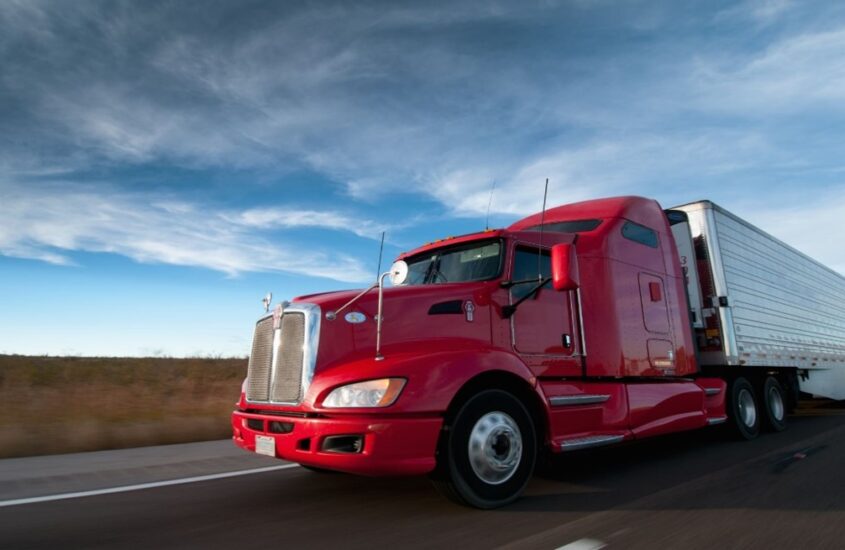The Good, The Bad, and The Ugly: My Likes and Dislikes in the Trucking Industry

Having spent 33 years working in the trucking industry, I have gained a deep understanding of the ins and outs of this fascinating field. From long hours on the road to the challenges of navigating through traffic, my experience has been both rewarding and challenging. In this article, I will delve into the various aspects of the trucking industry, highlighting the good, the bad, and the ugly.
Key Takeaways
- Trucking industry offers a sense of freedom and adventure for drivers.
- Safety concerns such as accidents and fatigue are major challenges in the industry.
- Environmental impact of trucking includes pollution and carbon footprint.
- Regulations and compliance can be frustrating due to red tape and paperwork.
- Technology advancements in automation have pros and cons for the industry’s future.
The Good: What I Love About Trucking
One of the aspects that drew me to the trucking industry is the flexibility and independence it offers. As a truck driver, I have the freedom to choose my own routes and schedules, allowing me to tailor my work to fit my personal needs. Additionally, trucking provides an opportunity for travel and exploration. I have had the chance to see breathtaking landscapes and visit different cities and towns across the country, making my job feel like an adventure.
Moreover, the high demand for drivers in the industry ensures job security. With an increasing need for goods to be transported across long distances, truck drivers are always in demand. This demand also translates into competitive pay and benefits. Truck drivers can earn a decent income, especially with experience and specialized skills.
The Bad: Challenges and Frustrations in the Industry
While there are many positives to working in the trucking industry, it is not without its challenges. One of the most significant drawbacks is the long hours and time away from home. Truck drivers often spend days or even weeks on the road, away from their families and loved ones. This can take a toll on personal relationships and lead to feelings of isolation.
Additionally, the physical demands of the job can be taxing on drivers’ health. Sitting for long periods, irregular sleep patterns, and poor eating habits can contribute to weight gain, back problems, and other health issues. Furthermore, unpredictable schedules and delays are a common frustration in the industry. Traffic congestion, weather conditions, and mechanical problems can all lead to unexpected delays, causing stress and frustration for drivers.
Moreover, limited access to amenities and resources on the road can be challenging. Finding suitable places to rest, eat, and shower can be difficult, especially in remote areas. This lack of convenience can make life on the road more challenging and less comfortable.
The Ugly: Dark Side of Trucking
| Metrics | Values |
|---|---|
| Number of fatalities in trucking accidents | 4,761 in 2017 |
| Number of truck drivers who reported being pressured to violate safety regulations | 3 out of 4 drivers |
| Percentage of truck drivers who reported experiencing fatigue while driving | 65% |
| Number of truck drivers who reported being harassed or assaulted on the job | 1 out of 3 drivers |
| Percentage of truck drivers who reported being paid less than minimum wage | 20% |
While the trucking industry has its fair share of challenges, there are also some darker aspects that need to be addressed. Safety concerns are a significant issue in the industry, many cars are the cause of Accidents involving trucks can have extremely devastating consequences, both for the drivers and other road users. Fatigue is a common factor contributing to accidents, as long hours on the road can lead to drowsiness and decreased alertness.
Furthermore, the environmental impact of the trucking industry cannot be ignored. Trucks contribute to air pollution and have a significant carbon footprint. The industry needs to find ways to reduce emissions and adopt more sustainable practices to mitigate its impact on the environment.
Moreover, regulations and compliance standards can be burdensome for truck drivers and companies alike. The paperwork and red tape involved in ensuring compliance with safety regulations can be time-consuming and costly. Streamlining these processes could help alleviate some of the frustrations faced by those in the industry.
Additionally, the trucking industry is currently facing a driver shortage. It is becoming increasingly challenging to attract and retain talented individuals in this field. This shortage not only affects companies but also puts additional pressure on existing drivers who may have to work longer hours or take on more routes.
Furthermore, advancements in technology, such as automation, pose both opportunities and challenges for the trucking industry. While automation has the potential to increase efficiency and reduce costs, it also raises concerns about job security for truck drivers.
Future of Trucking: Predictions and Trends
Looking ahead, the trucking industry is poised for significant changes. Advancements in technology and automation are expected to revolutionize the industry. Self-driving trucks and other automated systems have the potential to increase efficiency and reduce human error. However, this also raises concerns about the future of truck drivers’ jobs and the need for retraining and reskilling.
Moreover, there is a growing shift towards sustainable and eco-friendly practices in the industry. Companies are exploring alternative fuels, electric vehicles, and other green initiatives to reduce their carbon footprint. This trend is likely to continue as environmental concerns become more prominent.
Additionally, the rise of e-commerce has led to an increased demand for last-mile delivery and efficient logistics. As online shopping continues to grow, the trucking industry will need to adapt to meet these changing demands.
Furthermore, there is potential for changes in regulations and compliance standards. Governments and industry bodies are recognizing the need for updated regulations that address safety concerns while also considering the impact on drivers and companies.
Balancing the Good, the Bad, and the Ugly in Trucking
In conclusion, working in the trucking industry has its fair share of challenges and drawbacks. However, it also offers numerous benefits and opportunities. It is essential to acknowledge both sides of the coin and strive for a balance that ensures the well-being of drivers while meeting the demands of a growing industry.
Efforts towards safety, sustainability, and innovation are crucial for the future of trucking. By addressing safety concerns, adopting eco-friendly practices, attracting and retaining talent, and embracing technological advancements responsibly, the industry can continue to thrive while minimizing its negative impact.
As someone who has experienced firsthand the ups and downs of trucking, I remain optimistic about its future. With continued efforts towards improvement and adaptation, the trucking industry can overcome its challenges and continue to play a vital role in our global economy.
Always be sure your company is compliant in the truth and federal leasing laws Title 49 CFR 376.12
contract highlights: You must be paid within 15 days of submission of your delivery papers
If Your company requires an escrow, you must receive a separate accounting quarterly with interest paid off the United States treasury security’s
You not are required to purchase or rent ELD, Tires, etc. upon entering an lease agreement.
these are just a few highlights that many companies do not follow when having you sign an contract, big corporations know better and always will play stupid when it comes to trucking contract laws.
Remember if you decide to haul any freight, Do not haul if for cheap, if they can not get it covered they will have to increase the rate.
Tires, shop repairs, maintenance cost, insurance cost and so forth







